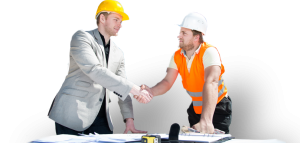
Lightweight screed
Pratliperl is a unique volcanic glass, a large deposit of which is found at only one location in South Africa and nowhere else on earth. Its properties are similar to classical Perlite but it differs in that the processed (expanded) form is ideally suited for use with cementitious and other binders. It also has truly exceptional fireproofing properties
Density in the loose state is ÷100 kg/m³ and, when mixed with cement, practical concrete densities ranging from ÷300 kg/m³ to 1000 kg/m³ can be achieved. The Pratliperl concrete will, therefore, float on water
Crack injection
One of the most versatile, problem-solving products available in epoxy systems today is Epoxy Injection Resin. Structural restoration of concrete by epoxy injection is very often the only alternative to complete replacement. It, therefore, results in large cost savings. Injection protects the rebar and stops water leakage.
Epoxy Injection Resin is a system for welding cracks back together. This welding restores the original strength and loading originally designed into the concrete. Epoxy injection restores the structural qualities the concrete design intended. In other words, under most conditions, it makes the concrete as good as new. It creates an impervious seal to air, water, chemicals, debris, and other contamination.
Self-levelling screed
Self-levelling concrete is a polymer-modified cement that has high flow characteristics and, in contrast to traditional concrete, does not require the addition of excessive amounts of water for placement. Self-levelling concrete is typically used to create a flat and smooth surface with a compressive strength similar to or higher than that of traditional concrete prior to installing interior floor coverings. Self-levelling concrete has increased in popularity as the degree of flatness and smoothness required for floor covering products has increased, with vinyl goods becoming thinner and floor tiles becoming larger.